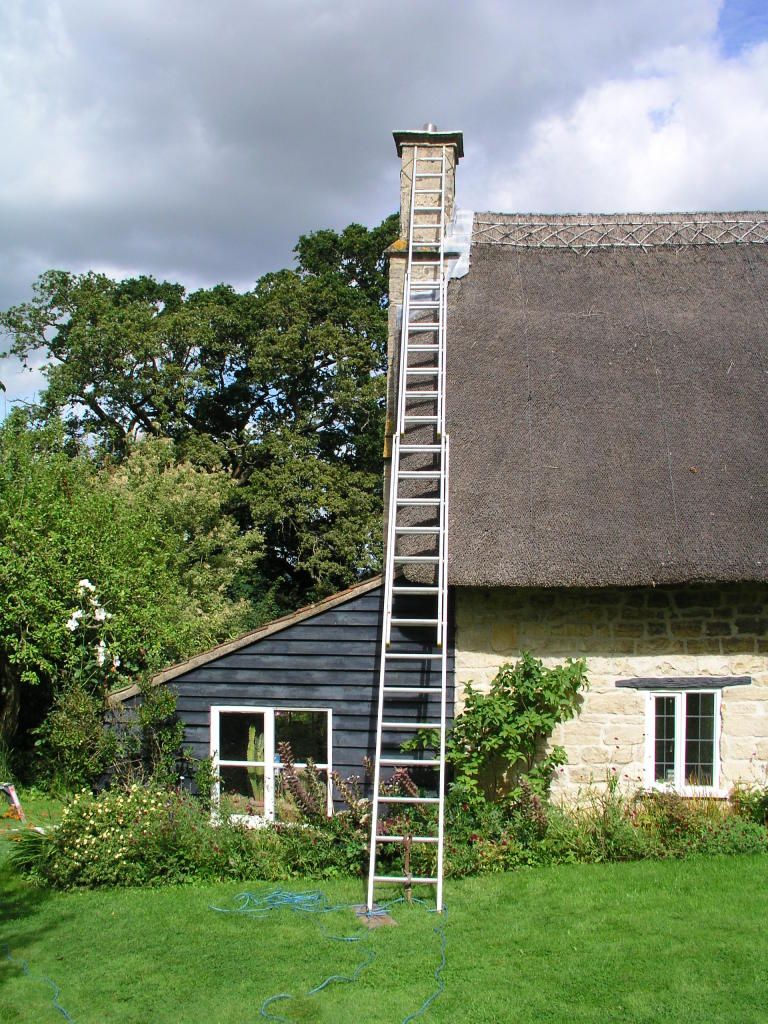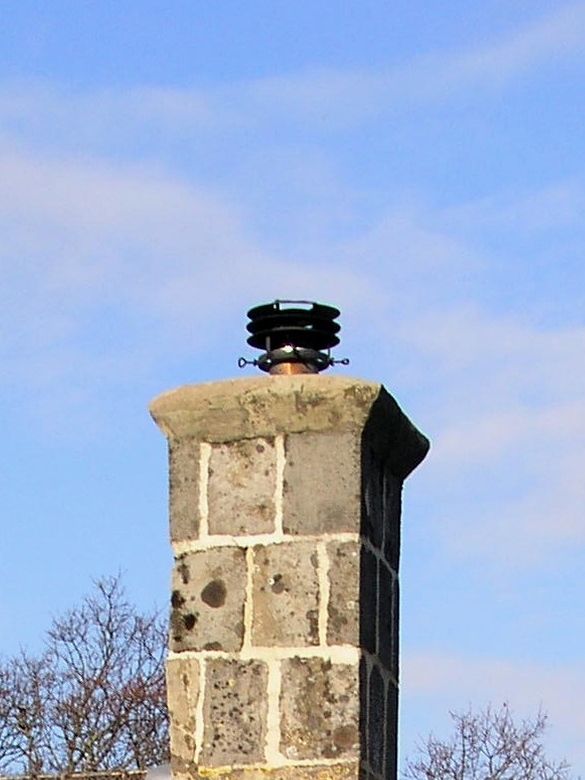88v8
Member
- Messages
- 3,129
- Location
- Glorious Gloucs
Rain had been falling for 200 years or so into our inglenook, but I naively assumed that once we had a woodburner+flue liner+rainhat, that would cease.
However, with the recent deluge, water was dripping down the back of the register plate.
And we have't even lit up yet.
Peering through the soot door, I saw that the water was running down the outside of the wrap around the liner. None is falling into the stove, so at least it's not coming down the inside of the liner, thank goodness.
Here is the stack where it was installed. A pot now sits on top of the stack.

Before the pot was fitted, the liner was terminated a foot or so above the closure plate.

The plate was supposed to be sealed with lime mortar before the pot was put on, but to make it absolutely watertight would be very difficult, and I had assumed that a little would leak in and be absorbed by the parging, but not the quantity that came down.
Initially, our HETAS engineer - who I think is not entirely comfortable with thatch - had wished to leave the pot entirely uncovered so that embers could most easily escape, but after I had forcefully pointed out that this would be tantamount to fitting a 6" rainwater pipe into the stove, he conceded that perhaps some sort of rain cover would be in order, so on top of the pot is a coolie hat-type of rainhat, which sits about 4" above the lip of the pot and is about 2" greater diameter. The chimney has a top diameter of 12", and it's hard to find a rainhat greater than 14" dia; I suppose I could make one. However, the greater the diameter, the more chance of embers being deflected down onto the roof, although with a DEFRA-approved stove I think this is not really an issue.
Anyway, I presume that rain has been ducking under the edge of the hat, landing in the bottom of the pot and then finding its way down the flue.
Our existing woodburner also has leaks. In this case the rain comes in through a hole which is there by design in the top of the flue cowl,

but fortunately the water escapes from the liner before reaching the stove, and finds its way out of the back of the register plate. Again, none actually falls into the stove.
I guess it's been leaking like this for the last 20 years.
When my new, longer, ladder arrives, I plan to fix this by attaching a rainhat as an additional layer over the top of the existing cowl.
Is all this sort of thing normal, or have I employed an idiot to instal my new stove? Must I resign myself to a degree of leakage?
A T-pot would be a sure-fire fix, but I wish have to speak with HETAS about its use with thatch, and tbh I don't think a T-pot would look that great on the stack anyway.
Any thoughts welcome.
Ivor
However, with the recent deluge, water was dripping down the back of the register plate.
And we have't even lit up yet.
Peering through the soot door, I saw that the water was running down the outside of the wrap around the liner. None is falling into the stove, so at least it's not coming down the inside of the liner, thank goodness.
Here is the stack where it was installed. A pot now sits on top of the stack.

Before the pot was fitted, the liner was terminated a foot or so above the closure plate.

The plate was supposed to be sealed with lime mortar before the pot was put on, but to make it absolutely watertight would be very difficult, and I had assumed that a little would leak in and be absorbed by the parging, but not the quantity that came down.
Initially, our HETAS engineer - who I think is not entirely comfortable with thatch - had wished to leave the pot entirely uncovered so that embers could most easily escape, but after I had forcefully pointed out that this would be tantamount to fitting a 6" rainwater pipe into the stove, he conceded that perhaps some sort of rain cover would be in order, so on top of the pot is a coolie hat-type of rainhat, which sits about 4" above the lip of the pot and is about 2" greater diameter. The chimney has a top diameter of 12", and it's hard to find a rainhat greater than 14" dia; I suppose I could make one. However, the greater the diameter, the more chance of embers being deflected down onto the roof, although with a DEFRA-approved stove I think this is not really an issue.
Anyway, I presume that rain has been ducking under the edge of the hat, landing in the bottom of the pot and then finding its way down the flue.
Our existing woodburner also has leaks. In this case the rain comes in through a hole which is there by design in the top of the flue cowl,

but fortunately the water escapes from the liner before reaching the stove, and finds its way out of the back of the register plate. Again, none actually falls into the stove.
I guess it's been leaking like this for the last 20 years.
When my new, longer, ladder arrives, I plan to fix this by attaching a rainhat as an additional layer over the top of the existing cowl.
Is all this sort of thing normal, or have I employed an idiot to instal my new stove? Must I resign myself to a degree of leakage?
A T-pot would be a sure-fire fix, but I wish have to speak with HETAS about its use with thatch, and tbh I don't think a T-pot would look that great on the stack anyway.
Any thoughts welcome.
Ivor


